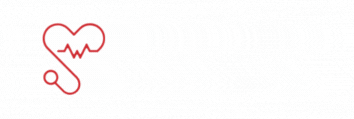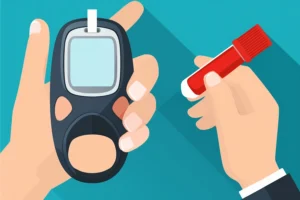Hypertension, commonly known as High Blood Pressure, is a serious but often silent condition where the force of blood against your artery walls remains persistently high. While it may not show obvious symptoms early on, this constant pressure can gradually damage your blood vessels and vital organs putting you at risk for heart disease, stroke, kidney failure and more.
The longer it goes unmanaged, the greater the danger. The good news? With early detection, regular monitoring and a few lifestyle changes, hypertension can be effectively controlled, helping you protect both your health and your future.
In this article, you’ll learn about the crucial steps to effectively combat this silent threat through a patient-centred approach and lifestyle modifications.
Taking Charge of Your Blood Pressure: A Patient-Centred Approach
Managing high blood pressure (hypertension) isn’t just about taking pills, it’s about you being an active part of your own health journey. A patient-centred approach means that your doctor or healthcare team listens to you, respects your choices and works with you to make the best decisions for your health. Here’s how you can take charge with the right support:
1.Be Involved in Your Care: You know your life better than anyone else so your healthcare decisions should reflect what matters most to you. Don’t hesitate to:
◦ Ask questions about your condition and treatment options.
◦ Share your concerns, goals and preferences with your doctor.
◦ Speak up if something doesn’t feel right.
2. Understand the ‘Why’ Behind Your Treatment: Understanding why you need treatment helps you stay motivated. Your doctor should help explain:
◦ What high blood pressure means for your health.
◦ The benefits of treatment and the possible side effects.
◦ The risks if high BP is left untreated.
Simple charts, pictures or examples like “heart age” can make this easier to understand and don’t be afraid to ask for them!
3. Monitor Your Blood Pressure at Home: Keeping track of your BP at home helps you stay in control. Here’s what you can do:
◦ Use a reliable digital blood pressure monitor.
◦ Take readings at the same time daily (e.g., morning and evening).
◦ Write down your numbers or use an app to track them.
◦ Share the results with your doctor at checkups.
This helps catch any changes early and adjust treatment as needed.
4. Stick to Your Medication Plan: Taking your medicine as prescribed is one of the most important things you can do. To make it easier:
◦ Ask your doctor if you can switch to a once-daily pill or a combination pill.
◦ Set alarms or use a pill organizer to help you remember.
◦ Let your doctor know if you’re having trouble, they’re there to help, not judge.
◦ Involve a family member if you need extra support.
5. Build a Support Team: You don’t have to do this alone! Nurses, pharmacists, dietitians and even physiotherapists can all be part of your care team. They can:
◦ Help with diet and exercise plans.
◦ Guide you on how to take medications.
◦ Encourage and support you through your journey.
Working together with your care team leads to better health and better results.
6. Use Technology to Help You Stay on Track: There are many tools and apps that can:
◦ Remind you to take your medicine.
◦ Track your blood pressure, weight or steps.
◦ Give tips on eating healthy and staying active.
But remember, technology should support your care, not replace personal advice from your doctor.
You’re the Most Important Part of the Team: Your voice matters. Your choices matter. And your health matters. A patient-centred approach puts you at the heart of your care because when you’re involved, supported and informed, managing high blood pressure becomes not just easier, but more effective.
Lifestyle Changes to Manage High Blood Pressure
The good news is that lifestyle changes can significantly help lower your blood pressure and improve your overall health. Here’s how you can take control of your blood pressure naturally.
1.Eat a Heart-Healthy Diet
One of the most effective ways to manage high blood pressure is through a healthy diet. The DASH diet (Dietary Approaches to Stop Hypertension) is highly recommended for this. It emphasizes eating more fruits, vegetables, whole grains and low-fat dairy products while reducing your intake of saturated fats and cholesterol. Include foods rich in potassium, magnesium and fiber, which support healthy blood pressure. Try to limit red meats, sugary drinks and processed foods as much as possible.
2. Cut Down on Salt
Too much salt (sodium) in your diet can raise your blood pressure. Aim to consume less than 2,300 mg of sodium per day, and ideally closer to 1,500 mg if you have high blood pressure. Avoid processed and packaged foods, which are often high in hidden sodium. Cook fresh meals at home using herbs and spices instead of salt to flavor your food. Reading nutrition labels can help you make better choices when shopping.
3. Get Regular Exercise
Physical activity strengthens your heart and helps it pump blood with less effort, which lowers your blood pressure. Aim for at least 30 minutes of moderate exercise like walking, brisk jogging, cycling, swimming or dancing on most days of the week. Even small bursts of activity throughout the day can be beneficial. If you haven’t been active in a while, start slowly and gradually increase your activity level.
4. Maintain a Healthy Weight
If you’re overweight or obese, losing even a small amount of weight can make a big difference. Losing just 5–10% of your body weight can help significantly lower your blood pressure. Focus on gradual, steady weight loss by combining healthy eating with regular physical activity. Avoid crash diets, instead aim for a sustainable lifestyle change that supports long-term health.
5. Limit Alcohol and Quit Smoking
Drinking too much alcohol can raise your blood pressure and reduce the effectiveness of medications. Limit alcohol to no more than two drinks a day for men and one for women. If you smoke, quitting is one of the best things you can do for your blood pressure and your heart. Smoking damages your blood vessels, making your heart work harder. Seek support from healthcare professionals or use quitting aids to help you stop smoking for good.
6. Manage Stress
Chronic stress can contribute to high blood pressure, especially if you deal with it through unhealthy habits like overeating, smoking or drinking. Finding healthy ways to manage stress is important. Practices like deep breathing, meditation, yoga or regular relaxation time can help calm your mind and body. Talking to a counselor or therapist can also be helpful if stress or anxiety feels overwhelming.
7. Monitor Your Blood Pressure at Home
Keeping track of your blood pressure at home helps you and your doctor understand how your lifestyle changes and medications are working. Use a digital blood pressure monitor and follow your healthcare provider’s instructions on how to measure it correctly. Keep a record of your readings and bring it to your medical appointments. Home monitoring can also help detect issues early and motivate you to stay on track.
Conclusion: You hold the power to improve your blood pressure
Managing high blood pressure doesn’t have to feel challenging or confusing. With a patient-centred approach and simple, consistent lifestyle changes, you can take meaningful steps toward better heart health and overall well-being. Remember, small changes add up and when you work closely with your healthcare team, use the right tools and stay informed and motivated, you’re not just managing a condition, you’re taking control of your life. Your journey is unique, and your active role in it makes all the difference.
References
- John William McEvoy, Cian P McCarthy, Rosa Maria Bruno, Sofie Brouwers, Michelle D Canavan, Claudio Ceconi, Ruxandra Maria Christodorescu, ESC Scientific Document Group et al. 2024 ESC Guidelines for the management of elevated blood pressure and hypertension: Developed by the task force on the management of elevated blood pressure and hypertension of the European Society of Cardiology (ESC) and endorsed by the European Society of Endocrinology (ESE) and the European Stroke Organisation (ESO). European Heart Journal. 2024;45(38):3912–4018. https://academic.oup.com/eurheartj/article/45/38/3912/7741010?login=false#503300543
- Hypertension. WHO. Published on March 16, 2023. Accessed on April 07, 2025. Available from: https://www.who.int/news-room/fact-sheets/detail/hypertension#:~:text=Hypertension%20(high%20blood%20pressure)%20is,get%20your%20blood%20pressure%20checked.
- High blood pressure. NHS. Last reviewed on July 19, 2024. Accessed on April 7, 2025. Available from: https://www.nhs.uk/conditions/high-blood-pressure/












